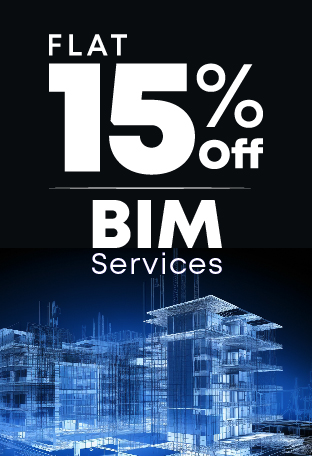‘It’s a culture change.’
A Guide to Strategic Planning of Transitioning to BIM Process
A successful BIM transition requires careful planning, selection of right tools, buy-in from senior management and all facilities related constituencies on BIM strategy, making everyone in the transition and preparing them for the changes ahead. Architectural Evangelist collects and disseminates best practices as a service to the architects, owners and construction professionals. Appropriate use of the information provided is choice of yours!
“BIG BIM, little BIM” “BIM Handbook”, “Building Information Modeling: A Strategic Implementation Guide“, “Green BIM” and dozens of other illustrious and not so illustrious books which have won the hearts, minds and big bucks in A/E/C industry. Just in case you failed to notice, all these books are written on Building Information Modeling (BIM).
They offer good advice on how to proceed with the BIM and integrated practice transition. There is a large volume of articles, white papers, publications, contract documents written regarding moving to BIM and how to implement in a firm. But, this article is an exception. It illustrates the various aspects of successful BIM transition, counseling “do’s” and “don’ts” at each step.
BIM has witnessed an unprecedented growth in recent years. Its pervasive impact has been felt across the industry. American Institute of Architects (AIA) indicates that BIM experienced a 160% increase in use by the mainstream architectural community, from 2005 to 2009.
Despite an increase in the software’s adoption, architects, owners, structural engineers and construction professionals are still quite unsure about the success of transitioning to BIM platform. Architectural Evangelist team comes up with a couple of suggestions that might help the next firm transition.
Here are the key steps in the process of transitioning an entire firm, no matter how big or small. If you follow this steps as outlined, you will be SUCCESSFUL…
Step – 1: Review Current Process and Develop Implementation Plan
To get BIM implemented, the first and foremost thing is to review the current standard and process. If you haven’t got it, there are people out there who will help. Hire a BIM consultant, he will review the existing process and suggest the strategic planning of transitioning to BIM.
Don’t:
- Don’t assume that you can pull off without substantial help from external consultant in the early stages.
- Don’t assume that because someone is under 30 and your job is correctly done.
- Don’t employ “CAD Specialist” to review the standards. CAD standards can never be true BIM standards.
Step – 2: Obtain Buy-in from Senior Management
Second most important task is to obtain buy-in from senior management and all facilities related constituencies on BIM strategy. Transitioning into the new work process without senior management’s support is like “jumping out of the airplane and finding a parachute before you hit the ground. Management does have to be on board and support 100% through all hoops and hurdle. Moving to BIM is a business decision and requires a lot of commitments from the principals on the various issues – e.g., software and hardware costs, revit training costs, interfacing with consultants and clients, inefficiencies of running parallel systems, impact on WAN and production system, etc. One certainty is to expect a lot of resistance and get prepared for this.
Don’t:
- Don’t go against the management decision. If management with you who can be against you.
- Don’t hide the light under a bushel. Discuss each issue with management in detail.
- Don’t run the different systems (AutoCAD and BIM) in an office. It’s a recipe for eventual disaster trying parallel processes.
Step – 3: Decide Expectations
BIM has a plethora of societal and economic benefits for large and small engineering and construction firms, and it will become the most suitable process of building design in near future.
Every firm has a different twist on what exactly they think it is and what exactly its benefit is going to be. But, what do you expect from a CAD firm trying to become a BIM firm? Determine the expectations, document them and create a way for everyone to have access to it.
Without proper roadmap and plan, we’re all just diving into more complex system and data tied to geometry, built to our own internal company requirements and therefore benefiting no-one in the end. You can organize customized workshops or general Q&A session for the principals, project managers, architects, engineers, draftsmen, and any of your stakeholders. These workshops and sessions focus on each team’s benefits, so that everyone is aware of the benefits and the overall business decision to move to BIM…
Don’t:
- Don’t move to BIM without calculating Return on Investment (ROI).
- Don’t expect high return from the initial projects.
- Don’t consider BIM another drafting process; consider its potential to change the business process and services.
Step – 4: Selection of RIGHT BIM Software
What software will best suit your needs to get you where you want to be? Very few organizations take the approach of looking at their BIM authoring tools in an unbiased way. They think there is only BIM software and they default to Revit Architecture. There are number of software, some more detailed than others. In some cases, a sacrifice may have to be made in order to meet the file sharing capabilities of others not related to your firm that you will be interacting with. Remember, Revit, ArchiCAD, Bentley Architecture are tools that contribute to the BIM process. The success of BIM transition depends on the selection of right BIM authoring tool.
Don’t:
- Don’t choose software without consulting the experts.
- Don’t just talk to salesmen, talk to people who use it hands on.
- Don’t simply defer to Revit, choose the software that’s right for YOU. You’re about to invest a LOT of time and money into this endeavor.
Step – 5: Go for Customized Training
After getting the buy-in with the management and software installation, the most important consideration is organization of customized training. Your training should coincide with the pilot project.
Hire a consultant and organize customized training sessions for the Change Champion. This training time can’t be sacrificed. Neither clients nor any meeting should conflict with the training sessions. It will create a perception among the staffs that principals and management support them in this effort and want to help them succeed. Consultants should specify the possible server and hardware upgrades that are very essentials to the BIM transition.
They should also provide and assist with the creation of templates, basic families or family training. They should mention the discipline management and workflow, how the different teams work and co-exist in the models, etc. There are so many other things that staffs need to understand – the importance of training, the impact of changes, how it is going to benefits them, what can be promised to clients and what to avoid, the impact of having to create new families and where they can be leveraged, etc. List down all queries and suggestions, and develop a BIM manual in order to limit the negativity in the process.
Don’t:
- Don’t SACRIFICE the training time. Even, if possible, don’t entertain any client or any meeting during the training session.
- Don’t assume that because someone is under 30 and your training is going to be more effective.
- Don’t be put off by people not wanting to follow. If management is with you who can be against you.
Step – 6: Select a Pilot Project and Initial Team
It is always better to start with small projects. But, it would be a terrible mistake to just launch cold turkey into a BIG project with a sensitive schedule. Run a few non priority projects from low to medium complexity. Form a pilot team from your brightest designers (senior technicians with excellent CAD skills) who are the most willing to embrace challenges, and start a new project with them. Give them the most standard (like x64 high-powered platforms) and fastest computers to be able to work on huge files.
Set up regular meetings with the team to leverage the possible opportunities. Establish standard benchmarks for them and reward them when set benchmarks are met. With proper encouragement and motivation (extrinsic and intrinsic), make them to go home at midnight as they are so excited. The idea is to start by teaching the teachers. The initial team then will teach the others.
Work out how to benefit from 3D aspects with marketing. Get the marketing team on the board as soon as possible; they will become the ardent supporters. Encourage the pilot team to discuss the brilliance of family library and 3D modeling on the open floor. Organize a common meeting where they can discuss various aspects of new technology and process and present 3D renderings and fly-throughs. Once the basics are mastered, evaluate the implementation plan. Then, you can add more value and services, and leverage the model to a multi-million dollar project.
Don’t:
- Don’t merely replicate the same drawings that your office has always produced. Look for ways to leverage the new possibilities in new ways.
- Don’t give up or default to CAD in the middle of the project – that precisely is the moment you will need to soften it. Keep your focus and that of your team on your ultimate goal.
- Don’t try to get everything perfect from the start. It may end up not being the ideal in the end.
Step – 7A: Create BIM-sphere and Change Perception
BIM is a collaborative effort and it represents a complete process change. Strategic planning of transitioning to BIM requires you to change the perception from the CAD drafting methodology to a more flexible and innovative process. Management, principals and consultants have to think about the transition process as a whole, when blueprinting the strategic planning of transitioning to BIM, and not let it revolve around software and hardware choice. The commitment to address the internal culture dynamics, obstacles and challenges that will occur with the new workflow is more important. Seamless communication plays an important role in the transition, too. Ensure that the team has a unified “go to” place for questions as they arise, so that staffs don’t find themselves getting different direction and rumors from different people. Keep on updating the BIM manual periodically and ensure that the model information is well managed.
Don’t:
- Don’t forget the BIM transition requires a transition in terms of staffing also.
- Don’t forget that resistance to the change can be made up by powering through the transition with all due single minded commitment and as fast as possible.
- Don’t underestimate the importance of transparent and seamless communication.
Step – 7B: Create BIM Manual and Encourage Change Champions
The greatest challenge in getting the AEC firms to embrace BIM modeling is convincing individual players that they would better off working collaboratively. Suggests Paul Loreto, President of London, Ont.-based paul f. loreto architect, “You are baking the cake together. And if you’re not doing it together, forget it.” The ultimate goal of training is to get the entire firm singing from the same sheet of music. You succeed when staffs that don’t have a high “change index” (see Fig.-1) start coming to you and are feeling left out of the contagion. Establish a culture to fail as fast as possible so that you can make people learn as fast as possible. The key to a successful transition lies in the attitudes of the staff that are making the transition. It is all about their perception; and if efforts are taken prior to the start of the transition to ensure that their perception is positive then the office will transition quicker.
Don’t:
- Don’t hesitate to clarify what BIM really is and what it means in terms of concept versus software.
- Don’t ignore the fact that the key to a successful transition lies in the attitudes of the staff that are making the transition.
- Don’t insist on forcing BIM into the traditional design practices, it will bring no-win situation.
Conclusion
A successful BIM implementation requires significant investments in technology, staff and training. There is no “cookie-cutter” solution. That’s why going into the process with your eyes open is essential. Commitment from the upper management, selection of right BIM software, customized training program, goal analysis, setting up priorities and moving in that direction are fundamentals to successful BIM implementation. Moving from AutoCAD to BIM platform also requires more powerful hardware and software, along with a network, servers, and high-speed telecommunications backbone that support the process. However, a tentative approach by trying to get everything perfect from the start may end up not being the ideal in the end.
Most have concerned that, for architecture, 2D is faster and legally less sensitive. While “legal issues” and “insurance” certainly are important, at the end of the day, it’s about adopting newer technologies and process to increase capabilities, enhance productivity and to remain competitive. There are lots of suggestions and advices out there. Yet, as with anything in life, change is constant. You need to jump into BIM and do it now. Best of luck!?!







 How AI BIM Modeling Shaping the Future of Residential Construction?
How AI BIM Modeling Shaping the Future of Residential Construction?  How BIM Services Enhance Collaboration, Design Choices, and Project Efficiency for Architects? – A Guide
How BIM Services Enhance Collaboration, Design Choices, and Project Efficiency for Architects? – A Guide  How is Artificial Intelligence in Construction Design Transforming Architectural Landscape?
How is Artificial Intelligence in Construction Design Transforming Architectural Landscape?  BIM Coordination Benefits for Contractors in the Preconstruction Stage
BIM Coordination Benefits for Contractors in the Preconstruction Stage